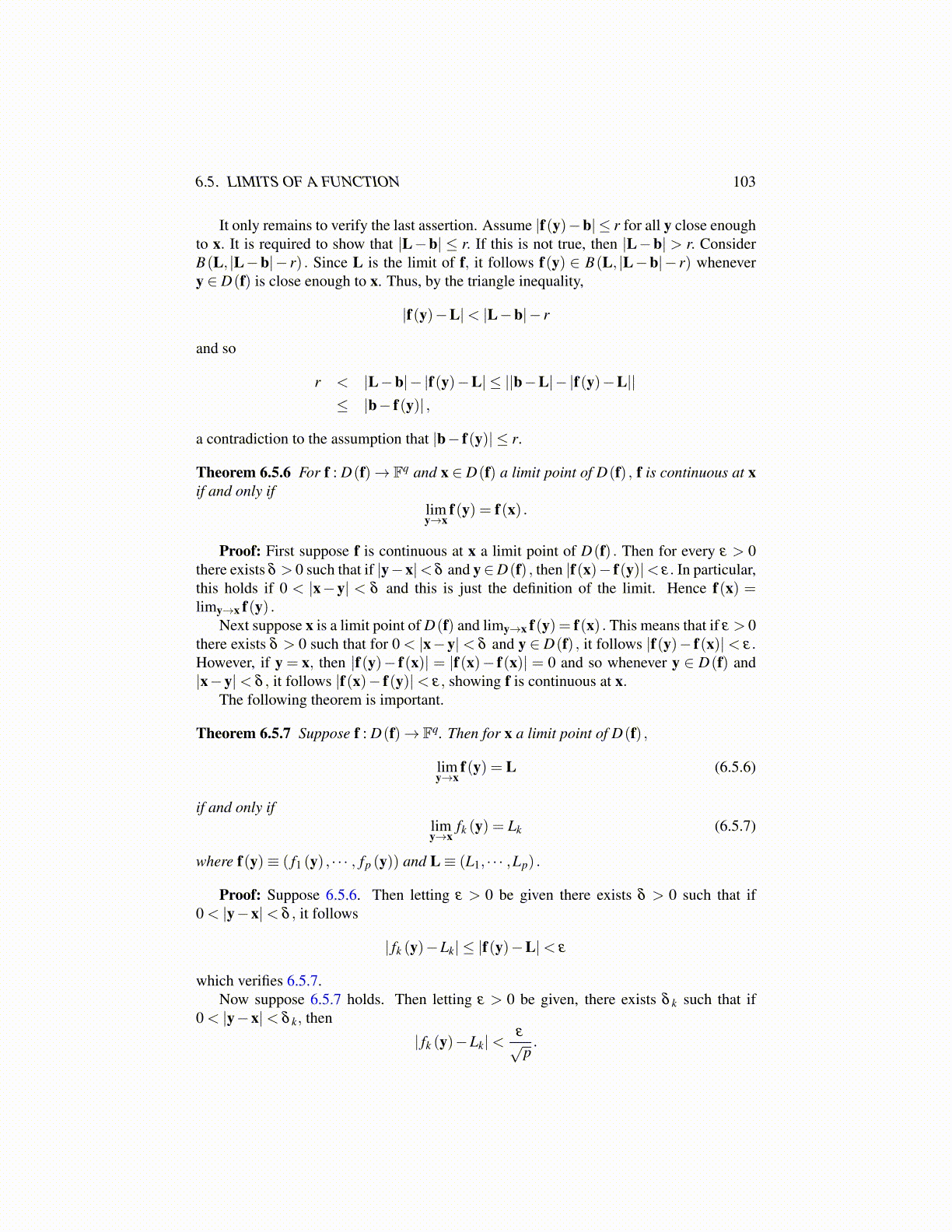
6.5. LIMITS OF A FUNCTION 103
It only remains to verify the last assertion. Assume |f(y)−b| ≤ r for all y close enoughto x. It is required to show that |L−b| ≤ r. If this is not true, then |L−b| > r. ConsiderB(L, |L−b|− r) . Since L is the limit of f, it follows f(y) ∈ B(L, |L−b|− r) whenevery ∈ D(f) is close enough to x. Thus, by the triangle inequality,
|f(y)−L|< |L−b|− r
and so
r < |L−b|− |f(y)−L| ≤ ||b−L|− |f(y)−L||≤ |b− f(y)| ,
a contradiction to the assumption that |b− f(y)| ≤ r.
Theorem 6.5.6 For f : D(f)→ Fq and x ∈ D(f) a limit point of D(f) , f is continuous at xif and only if
limy→x
f(y) = f(x) .
Proof: First suppose f is continuous at x a limit point of D(f) . Then for every ε > 0there exists δ > 0 such that if |y−x|< δ and y∈D(f) , then |f(x)− f(y)|< ε. In particular,this holds if 0 < |x−y| < δ and this is just the definition of the limit. Hence f(x) =limy→x f(y) .
Next suppose x is a limit point of D(f) and limy→x f(y) = f(x) . This means that if ε > 0there exists δ > 0 such that for 0 < |x−y|< δ and y ∈ D(f) , it follows |f(y)− f(x)|< ε.However, if y = x, then |f(y)− f(x)| = |f(x)− f(x)| = 0 and so whenever y ∈ D(f) and|x−y|< δ , it follows |f(x)− f(y)|< ε, showing f is continuous at x.
The following theorem is important.
Theorem 6.5.7 Suppose f : D(f)→ Fq. Then for x a limit point of D(f) ,
limy→x
f(y) = L (6.5.6)
if and only iflimy→x
fk (y) = Lk (6.5.7)
where f(y)≡ ( f1 (y) , · · · , fp (y)) and L≡ (L1, · · · ,Lp) .
Proof: Suppose 6.5.6. Then letting ε > 0 be given there exists δ > 0 such that if0 < |y−x|< δ , it follows
| fk (y)−Lk| ≤ |f(y)−L|< ε
which verifies 6.5.7.Now suppose 6.5.7 holds. Then letting ε > 0 be given, there exists δ k such that if
0 < |y−x|< δ k, then
| fk (y)−Lk|<ε√
p.